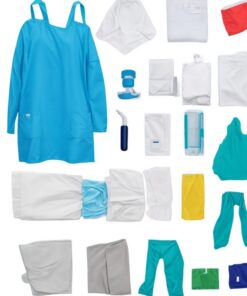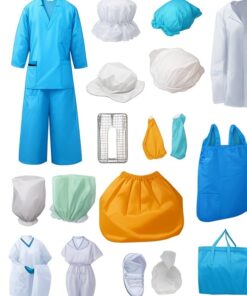Electric Blankets Johannesburg
R1,497.99 Ex VAT
Hospital blankets come in different types, each made from various materials and designed for specific uses within healthcare settings. Below are some common types of hospital blankets, their uses, and the materials they are made of:
1. Thermal Blankets
- Material: Often made of cotton, polyester, or a blend of both.
- Uses: These blankets are used to regulate body temperature, especially for patients recovering from surgery or in intensive care units (ICU). They help maintain warmth and prevent hypothermia.
- Properties: Lightweight, breathable, and insulating.
2. Fleece Blankets
- Material: Made from synthetic fibers like polyester.
- Uses: Fleece blankets are used for providing extra warmth and comfort. They are often used for patients in colder environments or those who need additional warmth in general care settings.
- Properties: Soft, warm, lightweight, and easy to wash.
3. Cotton Blankets
- Material: 100% cotton or a cotton-polyester blend.
- Uses: Cotton blankets are used in general patient care for comfort. They are breathable and provide moderate warmth, making them ideal for everyday use in hospital beds.
- Properties: Soft, breathable, absorbent, and hypoallergenic.
4. Emergency or Thermal Foil Blankets
- Material: Made from a thin layer of plastic or aluminum foil (mylar).
- Uses: These are used in emergency situations to prevent heat loss. They are typically used for trauma patients, hypothermia prevention, and in ambulances.
- Properties: Lightweight, reflective, and capable of retaining up to 90% of body heat.
5. Heated Blankets (Electric Blankets)
- Material: Often made of cotton, fleece, or polyester, with embedded heating elements.
- Uses: Used for patients who need to maintain a specific body temperature, such as those recovering from surgery or experiencing shock. These are controlled by temperature regulators.
- Properties: Provide adjustable warmth, machine-washable, and often used under supervision to prevent overheating.
6. Disposable Blankets
- Material: Typically made from synthetic, non-woven materials.
- Uses: These are single-use blankets often used in emergency rooms or during procedures where contamination control is important. They are also used in ambulance care or in the event of infectious diseases.
- Properties: Lightweight, hygienic, and easy to dispose of after use.
7. Blanket Warmers (Flannel Blankets)
- Material: Typically made from flannel or soft, brushed cotton.
- Uses: These are used in warmers to keep patients cozy and comfortable, especially before and after surgery. The warmth helps in reducing stress and anxiety.
- Properties: Soft, durable, and excellent at retaining heat when warmed.
8. Weighted Blankets
- Material: Made from cotton, polyester, or fleece and filled with glass beads or pellets.
- Uses: Often used in psychiatric or pediatric care to provide sensory input, reduce anxiety, and improve sleep. They provide deep pressure stimulation, which has a calming effect.
- Properties: Heavy, therapeutic, and calming.
9. Waterproof Blankets
- Material: Made with a waterproof layer (often vinyl or polyurethane) combined with cotton or polyester.
- Uses: These are used for patients who may have incontinence issues or in critical care units where fluids may be a concern.
- Properties: Waterproof, durable, and easy to clean.
10. Gurney or Stretcher Blankets
- Material: Cotton or synthetic blends (sometimes fleece).
- Uses: These blankets are used during patient transfers on stretchers or gurneys. They help keep patients comfortable and warm during transport.
- Properties: Lightweight, easily folded, and portable.
11. Pressure Relief Blankets (Low Air Loss)
- Material: Specialized, breathable fabrics with built-in airflow channels.
- Uses: These blankets are used to prevent pressure ulcers and to maintain airflow in bedridden patients, particularly in ICU or long-term care settings.
- Properties: Air-permeable, lightweight, and therapeutic.
12. Burn Blankets
- Material: Often made from a specialized wool material or burn-resistant fabric.
- Uses: These blankets are used in burn treatment and emergencies to prevent shock and retain body heat while protecting the burn area from infection.
- Properties: Fire-retardant, sterile, and insulating.
Key Considerations for Choosing Hospital Blankets:
- Comfort and Softness: Especially important for long-term patients.
- Durability: Should withstand frequent laundering.
- Hypoallergenic Materials: Important for sensitive patients.
- Weight: Some patients prefer lighter blankets, while others might need heavier blankets for warmth or therapeutic reasons.
- Temperature Regulation: Some blankets are designed to provide warmth, while others focus on breathability to prevent overheating.
These different types of hospital blankets are tailored to meet the varying needs of patients and care environments, from general comfort to specialized medical requirements.
Grey hospital blankets
Electric Guitar Quilt Blanket













